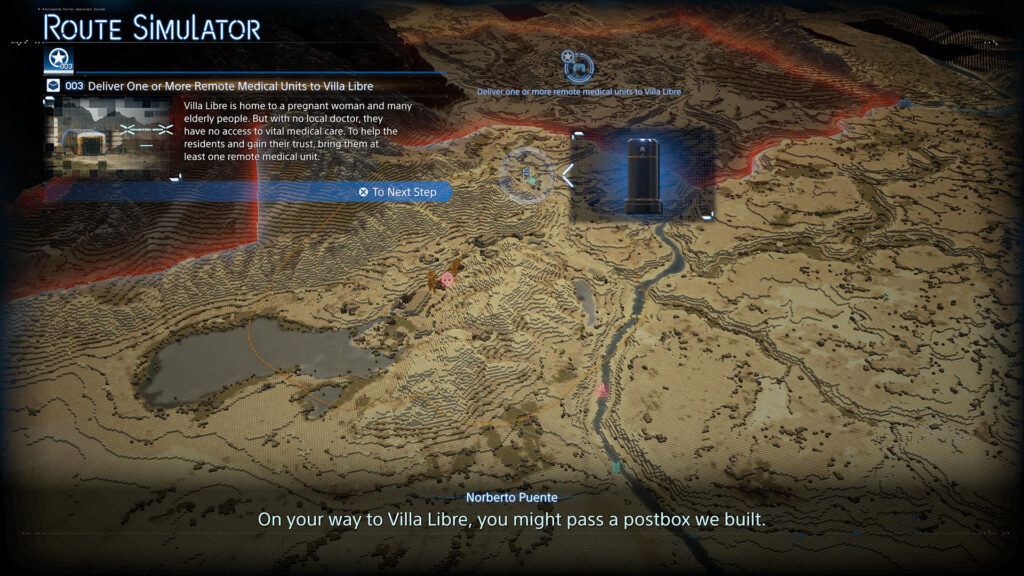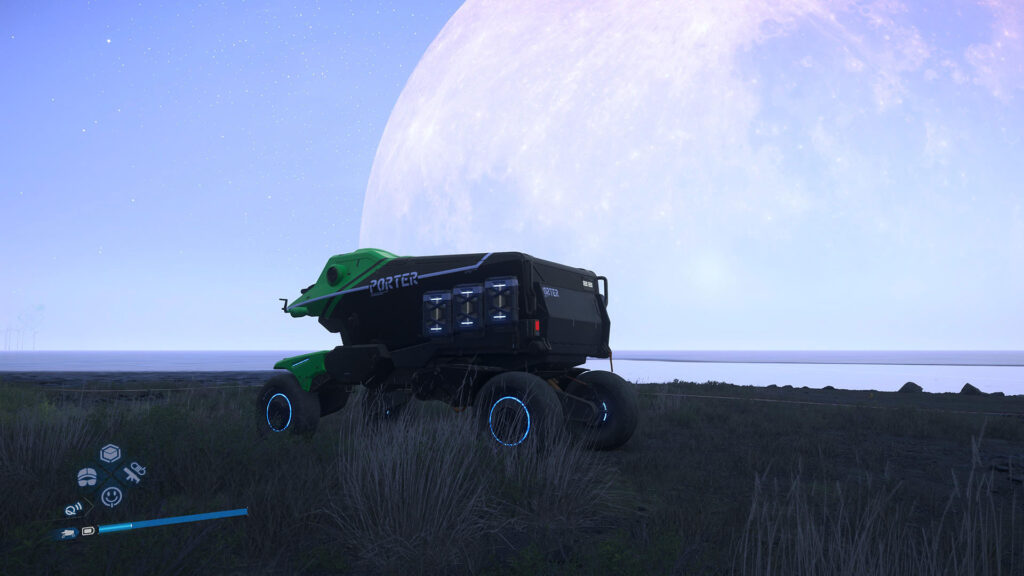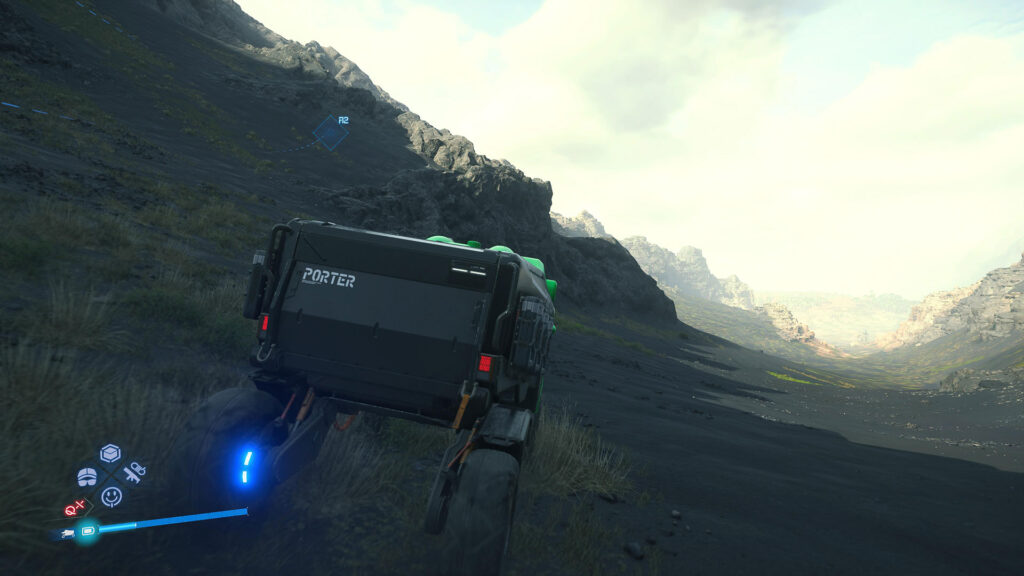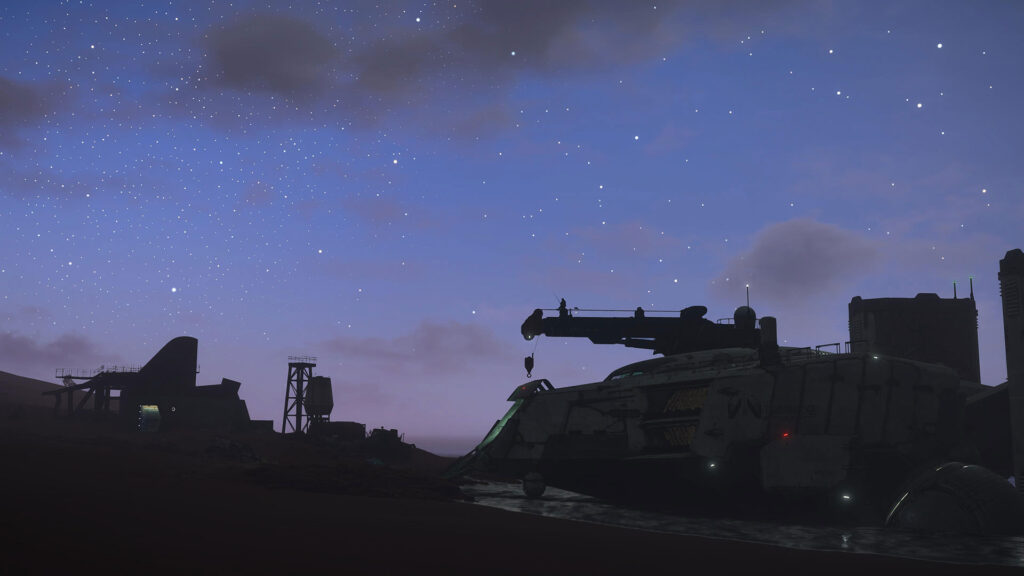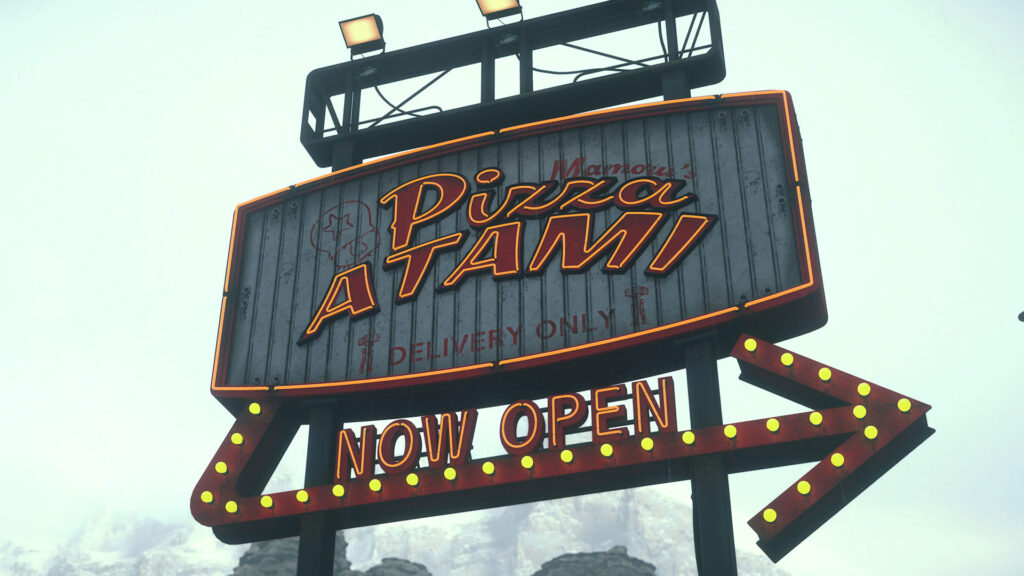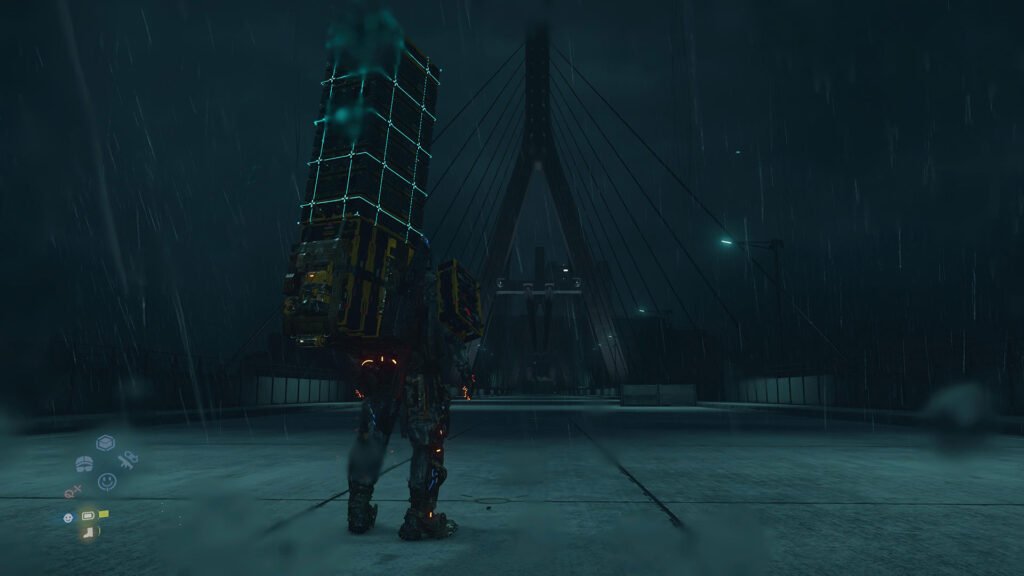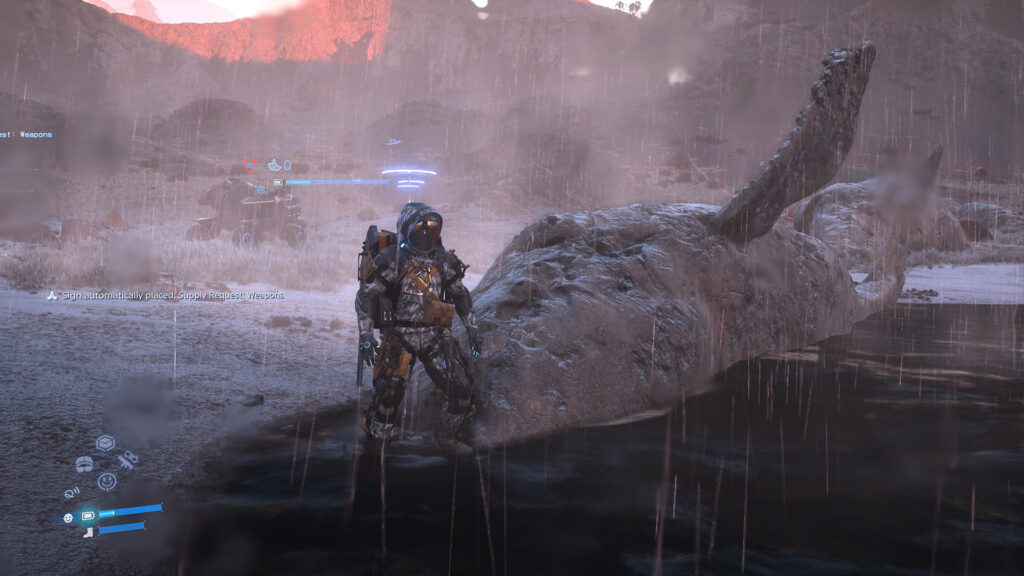Quick Verdict
The original Death Stranding was one of the most unique and interesting games I have ever played, with a core gameplay loop that was truly different from anything else I had experienced. Its sequel, Death Stranding 2: On the Beach, is also one of the most interesting games I have ever played, but not for the reasons you may think. The game is a prime example of how giving players too much choice can be detrimental to the experience.
How much you enjoy Death Stranding 2 largely depends on which aspects of the original’s gameplay appealed to you. There are numerous changes in the sequel, but whether they’re improvements can be debated. While I don’t regret spending over 50 hours with the game, I did roll credits feeling a bit disappointed. That said, anyone who enjoyed Death Stranding will have a great time with its sequel, but if you had issues with the first game, you’ll have to read on to decide whether Death Stranding 2 addresses those issues.
Strands of Liberty

There’s really no debate that Death Stranding was a one-of-a-kind experience for its time. It was easy to joke that the game was an Amazon delivery simulator, but that really wasn’t hyperbole. The core gameplay loop of Death Stranding and Death Stranding 2 involves transporting packages from one location to another. This largely worked for the first game because it was such a novel experience, with the game presenting a variety of challenges along the way. It explored an amazingly interesting world and really felt like the handcuffs were taken off Hideo Kojima, best known for creating the Metal Gear franchise. It was, after all, Kojima’s first game after breaking up with Konami and an entirely new IP.
The discussions around the original Death Stranding were interesting. I found myself strangely enthralled with the experience, despite feeling lost in its convoluted storytelling and epically long cutscenes. But the characters and the world were fascinating, and there was this odd sense of relaxation when trekking up a giant mountainside while carrying a tower of boxes on Norman Reedus’s back, who plays Sam Porter Bridges. Those moments of serenity were contrasted by tense segments involving BTs and strategic combat, while contending with purposely sluggish controls. When I finished the original, I was left appreciating the vision of the game and that clearly Kojima set off to create a game like no other, without regard for modern sensibilities. In a sense, this felt like the soul of Death Stranding: an experience with no compromises.
I mention all of this because I feel like Death Stranding 2 gave up what made the original so unique, succumbing to all the criticism and overcorrecting. I know it’s not that simple though, especially since I’m also quick to criticize a sequel for playing it too safe, like Marvel’s Spider-Man 2. I appreciate a game striving to be frictionless, but in Death Stranding 2’s case, that comes at a steep cost. There were sections of the game that I would go so far as to call boring, where I just pointed my vehicle toward the destination, held down R2, and scrolled on my phone. And this is where the debate about the game begins.

While it has been nearly six years since I played Death Stranding, there are still moments of the game stuck in my head, and I can recall the items I always wanted in my loadout when embarking on a delivery. When I set off on Sam’s new journey into Mexico, I smiled as the game guided me through using ladders and climbing anchors to navigate to an early destination. As the game wrapped up its introduction and I set off on the real journey into Australia, I spent the first few hours carrying a couple of ladders and climbing anchors on my back. Imagine my disappointment when I never had to use them because everything was much easier with a Tri-Cruiser, which unlocks very early in the game. Things got even simpler once I found someone else’s Pickup Off-Roader, which I used for the vast majority of my 50-plus-hour playthrough.
To be clear, I agree it’s fair to yell at me for how absurd this criticism is. After all, it’s a choice the game gives me, and I don’t have to use it. If I find the game too boring when using the Pickup Off-Roader, I simply shouldn’t use it. Games are about finding the fun for yourself. The problem is that Death Stranding 2 doesn’t innovate on its core gameplay loop at all. This means the novelty wears off after the first few deliveries, and it’s no longer a compelling gameplay loop after spending hours doing it in the first game. Because of the lack of innovation, I chose the easiest way to reach my destination, since it was the most fun for me as I now found that part of the game a bore.
The original Death Stranding felt like a puzzle to solve with each delivery because the game forced that upon you. Sure, it definitely opened up and was a lot easier once you got your hands on a vehicle and roads were built, but there were other obstacles, or friction points, to deal with. Death Stranding 2, on the other hand, really felt like my truck was capable of carrying everything for me, and as long as I don’t fly it off a cliff, I’ll be fine. Oh wait, even when I want to fly it off a cliff, I can just build a ramp and land safely without taking any damage.
Chiral Symphony

This experience really made me feel like Kojima Productions went a bit too far with player freedom or player choice. Now, while this is my major complaint with the game, you might be reading this and thinking he’s crazy, this is exactly what I wanted from Death Stranding 2, and that’s great; it’ll be a game you’ll really love. But for those who found the delivery part of the game already boring in Death Stranding and were hoping for some improvements here, I don’t think you’ll find any. Before long, I was ignoring most of those unlocks I received after every major delivery because the game never pushed me to explore them. Not once did I run into a situation where the truck wasn’t capable of taking me to my destination, and the few times I ended up on foot were because I literally took my eyes off the road and destroyed my truck by jettisoning it off a cliff.
The same could be said about combat. Much of the tension found in the first game has been tossed out the window in exchange for a more flexible and admittedly more fun combat system. The game showers you with weapon and gadget unlocks, and there’s plenty of variety in ways to approach combat. If you like stealth, there’s lots of it here. If you want to run and gun, go for it. Some of it can still feel clunky, especially in boss battles, and I did have a few frustrating moments where the game would holster my weapon for no reason. But I found the same issue with combat as I did with deliveries. You can easily go through the entire game with the basic assault rifle or machine gun, despite having all these other tools. There’s no rock-paper-scissors here, and some will love that, while others, like myself, find it drab. When every obstacle can be bypassed by a single solution, the sense of discovery fades.
It’s all really interesting too, because the game introduces all these new features in a way that makes you think Death Stranding 2 is going to be a very different experience. Take the dynamic weather system, for example. Early on, the game introduces you to a giant sandstorm that affects visibility, and the strong winds affect your balance. Guess what: hop into a truck and none of that matters. Then there are Gate Quakes, essentially earthquakes, which you’ll again find yourself ignoring if you’re just in a vehicle. Timefall also makes a return, but, you guessed it, it doesn’t matter when your cargo is safely protected inside the truck. There are other environmental effects throughout the world, including floods, fires, and avalanches, but none of these ever feel like a real threat. The first time Sam experiences a firestorm, the game introduces the Tar Cannon, which can be used to extinguish the fires. What a bummer that I never had a use for a Tar Cannon outside of that single instance.
Metal Gearhike

The good news for everyone is that the story is also a lot more streamlined and significantly easier to follow than the original, even if it’s more predictable. The cast of characters is better than ever, although I’m still waiting for that one real emotional moment involving Rainy. Other new additions, Dollman and Elle Fanning’s Tomorrow, are excellent, while Léa Seydoux’s portrayal of Fragile continues to be a standout. Many familiar faces make a return, but for the sake of avoiding spoilers, just know there’s plenty to love if you’re a fan of the first game’s cast. Unfortunately, Higgs once again plays the role of a one-note antagonist with the same goal as the first game. Luckily, Troy Baker knocks it out of the park, making it at least entertaining when he’s on the screen.
That said, writing still remains a weak point for Death Stranding 2. While the overall story isn’t as confusing as the original, there are still some parts that feel inexplicable, especially towards the end. What I found most strange about the entire experience is that the game opens up very strongly, setting up the mysteries and foundation for the journey in a way that is clearly Kojima. Then, there are 25 or so hours of surprisingly vanilla plot points and set pieces before the final three hours are unfiltered Kojima with a dash of anime influence that will leave you wondering, where this was all along? Again, it feels like there was an extreme overcorrection, where toning it down clearly had its benefits, but the shift in the final few hours of the game feels very jarring, almost as if two different creators were working on the game.
All gameplay criticisms aside, Death Stranding 2 is a technical masterpiece. It’s the first game I’ve played that truly felt next-generation, even though we’re now nearly five years into the PlayStation 5 era. Graphically, it’s in a league of its own and on the PlayStation 5 Pro, performance was flawless. Combined with the amazing soundtrack, the game has segments that are truly breathtaking and astounding. Having been a gamer since the late 1980s, I never would have imagined I’d live to see graphical fidelity on this level. Some of the cutscenes with the cast are so lifelike, you’d think you’re watching a movie. I adored the purposeful frame-rate contrast of Dollman, which gives him a fittingly stop-motion feel. Details like these really take Death Stranding 2’s experience to another level and into a class of its own.
Rainfall Reverie

Even with my fair share of complaints, I suspect that many players will appreciate and enjoy the very aspects I’m critiquing. There are plenty of gamers out there who will find the fun on their own and prefer the freedom the game has to offer. This is very much more of a sandbox approach to the Death Stranding formula, and I know that will resonate with a lot of people. Unfortunately, it’s not what I was looking for in a sequel. I did, however, more than enjoy my time spent with the game. It just didn’t leave the same mark on me as the original did.
That being said, I’m extremely grateful that games like Death Stranding 2 exist. The asynchronous building and seeing resources and buildings from other players remain delightful, especially logging in and seeing that other porters benefited from something I built. There’s an interesting sense of community despite feeling very much alone in this giant world. It connects well in today’s world, and there’s an underlying message in the story Kojima is trying to tell, as there always is with his games.
I think there’s a good reason Moby Dick is mentioned in Death Stranding 2; it reminds us that beneath every delivery lies an elusive obsession waiting to swallow us whole. The sequel gives you more freedom, technical polish, and a sprawling sandbox of possibilities, yet it loses some of the guiding currents that made the original feel like a singular journey. That freedom can feel like chasing your own white whale across an endless shore. Still, when a moment of quiet reflection or a breathtaking vista strikes, you remember why you signed on as Sam Porter Bridges in the first place. In the end, Death Stranding 2 asks you to carry your own burdens and choose your own path through shifting sands of solitude and connection. The real challenge is deciding whether you hold fast to the horizon you first set your sights on or let the tide carry you somewhere entirely new.
Death Stranding 2: On the Beach has an official release date of June 26, 2025, for PlayStation 5. This review is based on a purchased retail copy of the game on PlayStation 5 Pro. While FullCleared does have affiliate partnerships, they do not influence our editorial content. We may, however, earn commissions for products purchased via affiliate links.











